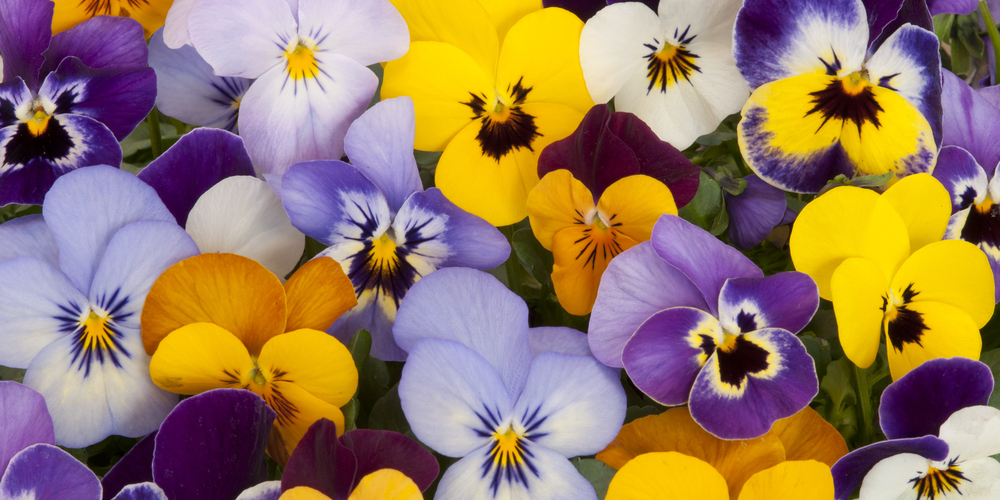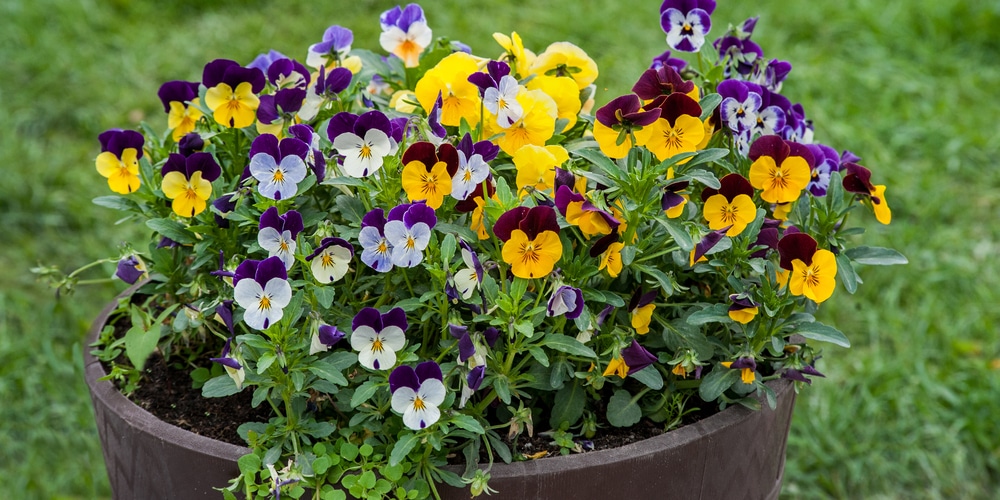If you are looking for plants to add to your winter garden, pansies and violas should be on your top list. These colorful flowering plants are an excellent addition to any fall or winter flower bed.
Despite their delicate looks, both plants have a high tolerance to low temperatures. The truth is that they do much better in the cold than in the warmth. But are violas the same as pansies?
You are in the right place to find out! Here, we put together all the information you should know about the debate violas vs pansy. Hopefully, it will help you clarify your ideas about these flowers!
Violas vs Pansy: What’s the Difference?

Despite looking very similar, you should not have issues identifying violas and pansies. All you have to do is pay attention to a couple of characteristics. For instance, violas’ blooms are tinier and more “voluminous.”
Additionally, violas grow lower to the ground and will reach heights between 3 to 8 inches. They work excellently in containers, where you can plant them around the edge and create some overflow. Overall, violas grow thicker.
On the other hand, pansies might not be as dense. However, their flowers are showier and more eye-catching. You can find them in more colors and varieties: if you are looking for something to make your garden more colorful, they might be your best option.
Also, violas tend to be less susceptible to damage: they will recover faster from low temperatures and present fewer challenges during the winter (and the summer).
With proper care, violas might keep producing even in January and February, allowing you to enjoy a splash of color when everything else is dormant in your garden.
The easier way to tell the difference between violas and pansies is to count the number of petals.
Pansies produce flowers with four peals pointing upward and one downward. On the other hand, violas have two petals growing vertically and the resting three growing towards the ground.
Violas vs Pansy: Similarities

Both violas and pansies flower in the winter and can be grown as annuals or perennials. The two look very similar and thrive in the same conditions. After all, they are both native to Europe. The truth is that pansies are part of the violas’ family. So, technically, all pansies are violas (but not all violas are pansies). With that information, you might understand why there are so many similarities.
Violas and pansies thrive in full to partial sun. Don’t forget that you might have to select a shadier location if you live in warm areas. The two flowers will start blooming in the early spring. However, the behavior might change according to your USDA hardiness zone.
Don’t forget to deadhead your flowers to encourage new growth and enjoy more blooms. The practice is easy but can become time-consuming if you have many flowers. Indeed, as long as the season is favorable, your plants will keep producing blooms, which means you’ll have to continue to deadhead them.
Which One Should You Choose?
The truth is that both plants perform excellently in most locations. You can consider combining them in the same arrangement for a colorful (and stunning result). The two plants also work well together in flowerbeds.
After all, they both have similar growing conditions and make for excellent companion plants. Both plants will provide plenty of colors, even at cooler temperatures. And the best part is that the two plants are not particularly challenging to grow under ideal conditions.
However, if you need something to help you decide, here are some tips. If you are looking for a hardier plant, go for violas. With proper care, you might be able to enjoy their blooms even during the coldest months of the year. If you live in a region where winters are cold, your best option might be violas.
Additionally, if you need to fill a bare space in your garden fast, these plants will give you better coverage over your flowerbed. Violas are an excellent option if you are looking for something to add volume and texture to your garden (besides plenty of colors).
On the contrary, if you wish to get abundant and showy flowers to spice up the looks of your garden, pansies might be a better option. These plants will attract beneficial pollinators (including bees and butterflies), which might come in handy if you have plants that need help for their reproduction.
Related Article: What to Do with Pansies in the Summer?
